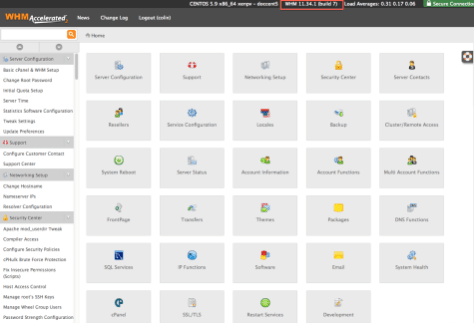A MySQL database is a relational database management system (RDBMS) that utilizes structured query language (SQL) to store, retrieve, and manage structured data.
MySQL databases consist of tables organized into rows and columns, with each table representing a specific data entity and each row representing a single record or entry. MySQL is widely used for web applications and websites, offering features such as data integrity, transaction support, scalability, and robust security mechanisms.
It is an open-source database system, making it accessible and customizable for a wide range of applications and industries. MySQL is known for its reliability, performance, and ease of use, making it a popular choice for developers and businesses seeking a powerful and cost-effective solution for managing their data.
Repairing a MySQL database involves several steps to identify and fix any issues that may be causing corruption or damage to the database. But to fix a database you need to access it. To access a MySQL database on cPanel, you typically follow these steps:
- Log in to cPanel: Open your web browser and navigate to your cPanel login page. This is usually accessed by appending “/cpanel” to your domain name (e.g., yourdomain.com/cpanel). Enter your cPanel username and password to log in. If this doesn’t works, then alternatively you can access the cPanel from your hosting’s account page.
- Locate the MySQL Databases Icon: Once logged in, you’ll see a variety of icons representing different features and functions available in cPanel. Look for the “MySQL Databases” or “Databases” icon, which is usually located under the “Databases” section.
- Access MySQL Databases: Click on the “MySQL Databases” icon to access the MySQL Databases interface. This interface allows you to manage your MySQL databases, including creating new databases, adding users, and assigning privileges.
- Locate Your Database: In the MySQL Databases interface, you’ll see a list of existing databases under the “Current Databases” section. Each database will have a name preceded by your cPanel username and an underscore (e.g., username_database1). Locate the database you want to access.
- Access phpMyAdmin: To interact directly with your MySQL database, click on the “phpMyAdmin” icon, which is usually located next to the database name. phpMyAdmin is a web-based application that provides a graphical user interface for managing MySQL databases.
- Log in to phpMyAdmin: After clicking on the phpMyAdmin icon, you’ll be directed to the phpMyAdmin login page. Enter the username and password for the MySQL database user associated with the database you want to access. This may be different from your cPanel login credentials.
- Navigate Your Database: Once logged in to phpMyAdmin, you’ll see a list of databases on the left-hand side of the screen. Click on the name of the database you want to access to expand it and view its tables. You can then click on individual tables to view and manage their contents.
- Perform Database Operations: From the phpMyAdmin interface, you can perform various database operations, such as running SQL queries, creating or modifying tables, importing or exporting data, and managing users and permissions.
- Log Out and Close phpMyAdmin: After you’ve finished working with your database, be sure to log out of phpMyAdmin to secure your data. You can do this by clicking the “Log Out” button in the phpMyAdmin interface. Once logged out, you can close the phpMyAdmin window or tab.
By following these steps, you can easily access and manage your MySQL databases on cPanel using phpMyAdmin.
Here’s a general guide on how to repair a MySQL database:
Backup Your Database: Before making any changes to your database, it’s essential to create a backup to ensure that you can restore your data in case anything goes wrong during the repair process. You can use MySQL’s built-in tools or third-party backup solutions to create a backup of your database.
Identify Database Issues: Use MySQL’s diagnostic tools to identify any issues or errors in your database. You can check the MySQL error log, run diagnostic queries, or use tools like MySQL Workbench to analyze the database’s structure and integrity.
Use MySQL Check Table Command: MySQL provides a built-in command called CHECK TABLE that allows you to check the integrity of tables in your database and repair any corruption or damage. You can use this command to check individual tables or the entire database.
CHECK TABLE table_name;
Use MySQL Repair Table Command: If the CHECK TABLE command identifies any issues with your tables, you can use the REPAIR TABLE command to fix them. This command repairs corrupted tables by rebuilding the table’s indexes and data structure.
REPAIR TABLE table_name;
Use MySQL Repair Database Command: If you suspect that your entire database is corrupted, you can use the REPAIR DATABASE command to repair all tables in the database at once.
REPAIR DATABASE database_name;
Use MySQL Table Maintenance Operations: MySQL provides additional table maintenance operations, such as OPTIMIZE TABLE and ANALYZE TABLE, which can help improve the performance and integrity of your database. You can use these commands periodically to optimize and maintain your database.
OPTIMIZE TABLE table_name;
ANALYZE TABLE table_name;
Monitor Repair Progress and Errors: During the repair process, monitor the progress and check for any errors or warnings that may occur. This will help you ensure that the repair is successful and that no further issues arise.
Verify Database Integrity: After repairing your database, verify its integrity by running diagnostic queries and checking for any remaining issues. Ensure that your data is intact and that the database functions properly.
Regular Maintenance and Monitoring: To prevent future database issues, implement regular maintenance tasks such as backups, monitoring, and optimization. Regularly check for errors, monitor database performance, and address any issues promptly to keep your MySQL database healthy and reliable.
By following these steps and best practices, you can repair your MySQL database and ensure that it remains stable, reliable, and free from corruption or damage.







































